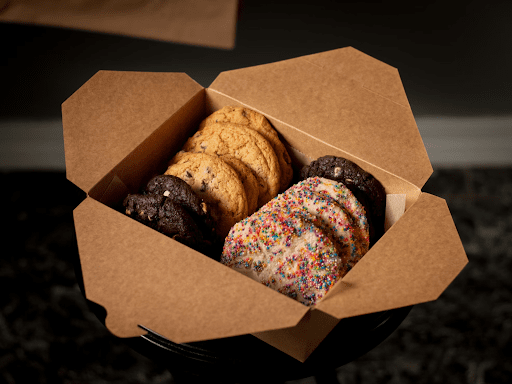Food Packaging: An In-Depth Analysis

Food packaging does much more than just wrap up food content. It keeps food safe and fresh while traveling long distances, sometimes across the world, before finally reaching hungry customers. Careful packaging balances easy access and communication with protection from damage, germs, oxygen, light, and pests. Good packaging also reduces food waste by extending shelf life.
However, too much plastic packaging pollutes landfills and oceans. So, companies now aim to use renewable materials like plant fibers as alternative plastics. These new solutions can decompose back into nature over time. As passionate innovators develop safer and more eco-friendly food packaging, they open up a better future that balances food preservation with environmental protection. This introduces new compostable, recyclable, and biodegradable options to help secure healthy foods and ecosystems ahead.
The Importance of Food Packaging
Core functionalities underpinning why proper packaging holds immense strategic value include:
Protection and Preservation
Successful containment shields foodstuffs against physical damage, oxygen, light, moisture, microbes, and vermin exposure. If left unprotected, this can degrade nutritional quality and dramatically shorten consumable lifespans.
Information and Marketing
Labels convey compliance codes, ingredient lists, preparation guidance, and branding, distinguishing offerings competitively as products travel remote distances far from the points originally manufactured or grown. Packages represent essential real estate around messaging and decor, creatively targeted to attract consumers.
Convenience and Portion Control
Single-serve packets, resealability, and lightweight handling simplify usage across settings, from packing lunches comfortably to reducing preparation workload or eliminating contamination risks by reusing bulk items repeatedly. This expands access occasions into new settings quickly.
Product Identification & Tracking
UPC barcodes plus traceability data sets allow inventory management, monitoring product genealogy, and ensuring accountability across supply chains. This enables rapid issue isolation or recall execution if ever required.
Food Waste Reduction
Optimized protective properties directly combat product losses accumulating from premature spoilage; otherwise, there is an inevitable absence of containment solutions. These solutions shield goods sufficiently through last-mile deliveries and home kitchen cabinet conditions, keeping nutrition viable for the longest possible time. This counters gratuitous waste directly. Every item protected from perishing equals less environmental impact.
Careful packaging considerations spanning the above-interrelated dimensions prove indispensable for successfully shepherding products intact through complex value chains until they are conveniently placed in consumers’ hands efficiently without excessive ecological burdens historically incurred under outdated legacy models.
Types of Food Packaging Materials
Primary containers leveraged across food applications include:
Glass
Chemically non-reactive and sterilizable, but heavier weight challenges transport efficiency despite being highly recyclable.
Metal
Strong barrier against light, gases, and moisture but rarely recyclable or reusable while risking flavor transfer between production cycles without vigilant sanitation. Significant insulation properties are beneficial for preserving chilled/frozen contents.
Paper and Cardboard
Economical options with custom printability enable lightweight shipments, improving sustainability profiles, although limited moisture protection requires additional safeguards shielding contents sufficiently across high humidity supply lanes. Recyclability eases renewability but is commonly difficult to decontaminate for direct food contact compared to costlier plastic-coated papers uniquely engineered to uphold purity with recyclability largely maintained.
Plastics
Lightweight, shatterproof, low cost, and diverse barrier strength adjustability optimizes shelflife custom-tailored against oxygen, UV light, or moisture, securing even delicate perishables over prolonged durations unpreserved otherwise. However, plastic waste accumulation and petrochemical footprint tarnish viability, requiring responsible recovery, substitution, and end-of-life handling, mitigating unchecked dumping as global adoption widens, outpacing waste mismanagement currently.
Balancing factors across substrates demands careful alignments, choosing ideal enclosures, maximizing merchandise integrity and distribution efficiencies sought while minimizing cumulative environmental impacts over full lifecycles assessed holistically from origin through disposal.
Innovative Packaging Technologies
Several contemporary advances expand preservation possibilities:
Modified Atmosphere Packaging (MAP)
Altering internal gas concentration ratios (like higher nitrogen or CO2 proportions) slows and produces ripening processes, almost suspending time, keeping natural freshness, locking in flavor, otherwise quickly escaping without intervention.
Vacuum Packaging
Evacuating air inside packages virtually eliminates oxygen, rapidly accelerating food decay once opened subsequently. This substantially extends unopened food life multi-fold using sound barrier pouches preventing reintroduction lengthening usable product viability additionally.
Active & Intelligent Packaging
Incorporating humidity regulators, CO2 emitters, oxygen scavenging films, and time/temperature deterioration sensors enables dynamic food preservation longevity fine-tuned responses to changing transit conditions in real-time. The future potential seems limitless, sensing & automatically adapting storage to counter degradation factors, maximizing merchandise stability.
Edible Packaging
Nature-sourced transparent seaweed extract or algae pouches encasing contents entirely edible, while home compostable alternatively represents fascinating enclosures preventing residual waste, unlike disposable wrappers, which ultimately require recycling or disposal once the goods inside are emptied completely. These self-contained all-inclusive parcels elegantly charm consumer simplicity desires.
Ongoing Science expanding food lifetime pathways signals fruitful decades ahead, optimizing preservation through chemistry and responsive sensor innovations once only recently imaginable.
Environmental Impact of Food Packaging
However, ecological considerations around material selections and renewability grow in importance, facing waste accumulation threats globally:
Waste and Pollution
Single-use plastics accumulating across poorly managed landfills and pervading oceans require responsible sourcing policies plus consumer behavioral shifts limiting uncontrolled dumping practices through Lifecycle Analysis (LCA) illuminating renewability constraints packaging imposes at conclusion life each choice entails.
Recycling and Biodegradability
The transition toward recyclable substrates, higher recycled content integration, and most optimally compostable/biodegradable materials returning nourishment into soils rather than persisting indefinitely represents a pivotal direction gaining momentum as consumers demand ethical value chains demonstrating eco-credentials quantifiably through trusted sustainability audits exposing genuine impact reductions rather than marketed facades alone. This revolution gains momentum daily.
Sustainable Packaging Innovations
Numerous ingenious eco-conscious packaging solutions utilize agricultural crop residual waste streams like rice husks, wheat chaff, or coconut fibers homogeneously distributed throughout molded trays, sustainably biodegrading back into soils across home composts.
Additional emerging options zone in on recycled paper composites, polylactic acid (PLA) from fermented plant starches, and mycelium foams clinically proven to disintegrate naturally across backyard compost piles forgivingly. Brands proactively adopting renewables steal wider margins before external forces necessitate change unwillingly later.
Future Trends in Food Packaging
Several intriguing developments lie ahead:
Innovative Packaging
Increasingly interconnected packs embed digital freshness sensors monitoring internal/external environments, altering consumers if deterioration changes temperature, humidity, or oxygen composition parameters, indicating the food is unsafe any longer. This eliminates reliance on guessing arbitrarily food viability based on labeled dates crudely estimating thresholds, after which microbiome proliferation risks accelerate beyond usability periods conservatively.
Sustainable Materials
As next-generation biopolymers utilizing crops like corn emerge, competing performance and pricing profiles against conventional polymers today, material sciences point to brighter futures derived sustainably as petrochemical dependencies decline mid-century onward, responding to climate realities afoot globally, mandating accelerated decarbonization nearly universally across societies.
Customization
Digitally printed packaging allows personalized messaging tailored to smaller production batches, preventing excessive generalized overruns once necessary, amortizing setup fees only justified more giant cube runs primarily. This opens doors to localizing offerings resonating with customers uniquely through targeted customization, lowering barriers to reaching niche demographics broadly once unfeasible economically years prior.
Challenges in Food Packaging
However, thoughtful strategies confront known hurdles creatively:
Balancing Functionality and Sustainability
Extending merchandise lifespan with minimal ecological burden demands a delicate equilibrium often solely achieved by iterating generations balancing barriers and protection capacities initially lacking biodegradable substrates, subsequently enhanced over time through creative coatings until reaching parity and meeting demands equally across metrics holistically. But meaningful progress is seen daily.
Regulatory Compliance
As governance expectations tighten around responsible sourcing, recyclability thresholds, and food-grade safety precautions, continually evolving best practices and testing protocols ensure packaging choices meet the newest criteria before regulations potentially limit fewer alternatives later should more reactive approaches persist shortsightedly. However, when organizations proactively adopt emerging safety science before enforcement, this leadership earns customer trust through evidence-based, freely transparent supply chains.
Cost Considerations
Methodical migration coordinating supplier and manufacturer partnerships incentivizes investments into innovative equipment and smarter materials, benefiting entire value ecosystems and multiplying returns over enough time that initial financial risks dissipate as scales rise and conversion barriers reduce integrating renewability more wholly across time.
Also Read: Online Tool & Calculators in France
Conclusion
As waste volumes threaten ecosystems globally, transitioning toward renewable biopolymer substrates, recyclable lifecycles, and closed-loop circular economies reconcile critical food protection capacities with environmental limitations. Driven by maturing agricultural bioplastics matching performance profiles affordably against conventional predecessors, passionate industry pioneers now illuminate brighter packaging futures safeguarding merchandise effectively while advancing holistic value chain renewability. People and the planet will thank us all for instituting responsibly ahead through this pivotal eco-innovation frontier now in reach, benefiting universally.





